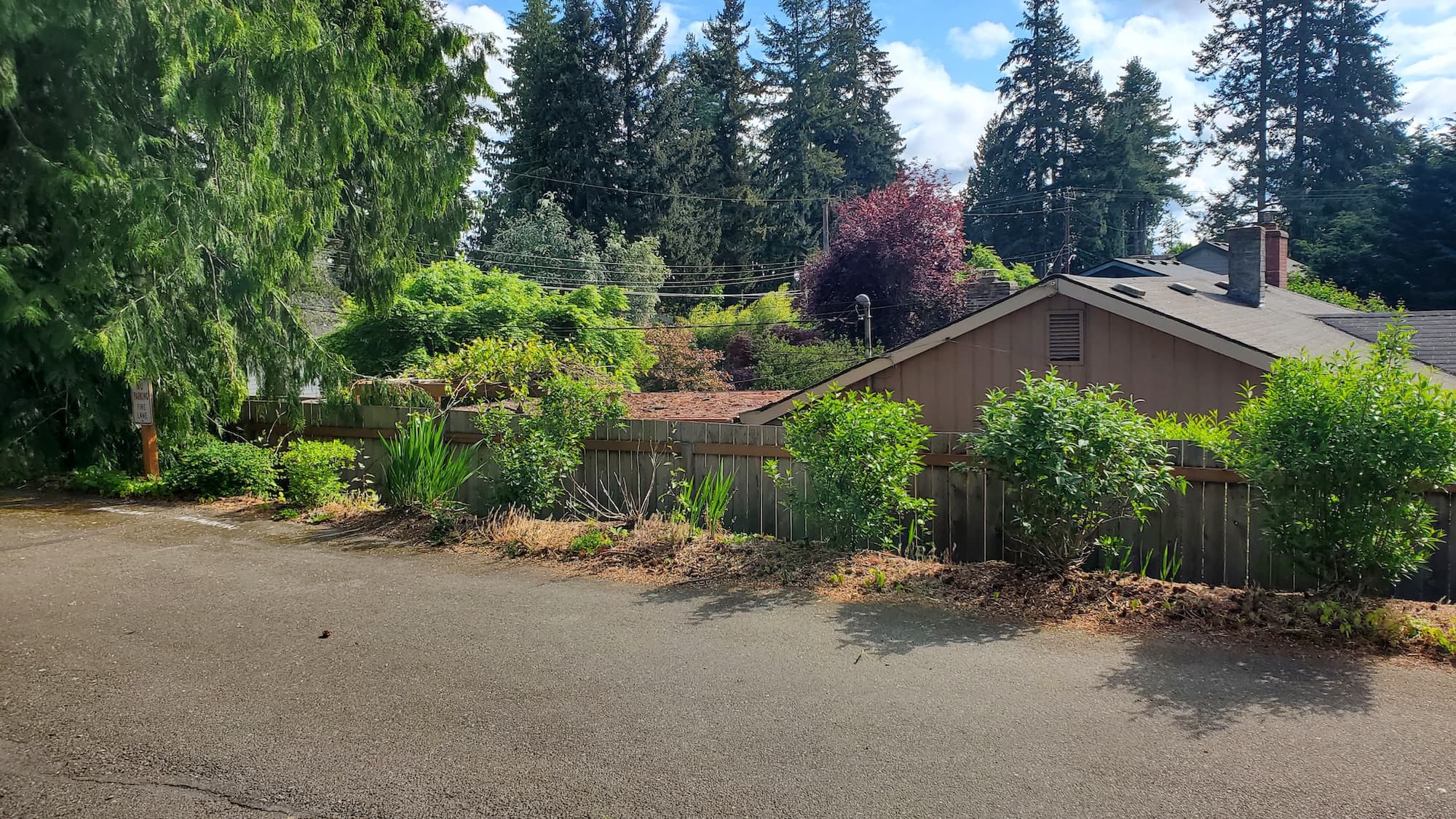West Seattle Winter Shrub Trimming
Homeowner’s Issue
West Seattle yards face a specific set of pressures: a marine climate with cool, wet winters and relatively dry summers, heavy fall/winter rain, and local microclimates from Alki’s salt spray to the sheltered pockets around Fauntleroy. Many properties sit on compacted glacial till or shallow topsoil over clay, which holds water in low spots and encourages moss and shallow-rooted weeds. North- and east-facing beds get persistent shade and moss; south-facing slopes can desiccate in summer if not mulched properly. Slopes in High Point and Admiral require careful cuts to avoid erosion and to maintain sightlines at driveways. Common plant problems here are overgrown evergreen hollies, ivy and blackberry encroachment, leggy rhododendrons, and winter-battered roses.
HOAs in some West Seattle neighborhoods expect tidy, low-profile shrubs for curb appeal, and narrow sidewalks and driveways demand precise pruning to keep sightlines and pedestrian access clear. With Seattle’s occasional late freezes and regular winter storms, timing and method matter: prune structurally in late winter, remove diseased wood now, and protect root moisture with mulch to reduce summer stress. We use sustainable, non-chemical approaches—no herbicides—because salt, rain, and runoff here make long-term soil health essential for resilient landscapes.
Our Quality Service
We assess the property, prune for structure and safety, and leave plant architecture that survives wind and salt. Tools are sharp and sanitized between jobs; we use hand-pruning, loppers, pruning saws, and battery trimmers for low noise. Clippings are sorted: small material is chipped or composted, and larger debris is hauled away or placed in the green bin per client preference.
Typical timelines: small front-yard trim (1–2 shrubs) — 1–2 hours; average yard (5–10 shrubs) — half to full day; larger jobs scheduled as a day or two with a clear start and finish. We prioritize sustainable steps: organic weed control, mulch replenishment, and erosion-aware pruning on slopes. We avoid herbicides entirely and recommend planting and mulch strategies that reduce future maintenance and water demand.
What’s Included
- Site assessment and pruning plan.
- Removal of dead, crossing, and hazardous branches.
- Shaping to improve sightlines, curb appeal, and plant health.
- Cleanup: chipping, composting, green-bin or haul-away (your choice).
- Optional mulch application (specify depth).
Options / Upgrades:
- Mulch + landscaping fabric under heavy weed pressure.
- Organic weed control (manual removal, solarization where appropriate).
- Haul-away vs. green-bin sorting for green waste.
- Minor planting or replacement suggestions for low-maintenance, native-friendly shrubs.
Before & After / Expectations
Expect some noise from battery trimmers and the chipper on larger jobs; smaller trims are quiet. There will be debris while we work; we sort and remove or compost material per your preference. Access needs: 3–4 feet clear for equipment and safe walking; tight front-porch access may require hand-only work.
Timing notes for West Seattle:
- Best trimming window for structure is late winter (Feb–Mar) after long cold snaps pass.
- Avoid heavy pruning during wet freezes; mulch now to retain root moisture through spring.
- Watch for moss and ivy year-round; early spring is when weed pressure spikes after rains.
- Watering tip: during dry summers, deep, infrequent watering works better than frequent shallow sprays.
FAQs (3–5)
Q: Do you use herbicides?
A: No. We use manual removal, solarization, mulching, and organic controls only.
Q: How long until shrubs look “normal” after heavy shaping?
A: For structural reductions expect 4–8 weeks of regrowth; most shrubs settle into a refreshed form by the first flush of spring.
Q: Do you haul debris or leave it for the green bin?
A: Both. Choose green-bin sorting or full haul-away. We’ll quote both options upfront.
Q: Can you work on steep slopes or right-of-way plants by sidewalks?
A: Yes. We follow erosion-control best practices and maintain sightlines for pedestrian safety.
Call to Action
West Seattle homeowners: book a winter trim that protects plants and reduces future work. We offer quick scheduling, clear estimates, and local know-how from Alki to Fauntleroy. Free photo estimates or onsite visits available; timelines and options explained up front.
Email: neatandtidyseattle@gmail.com
Phone: 206-538-9344
Mon–Sun: 9am–6pm
Ready for a tidy, sustainable yard built for Seattle weather? Email neatandtidyseattle@gmail.com for a free estimate.










